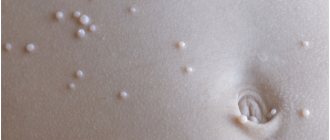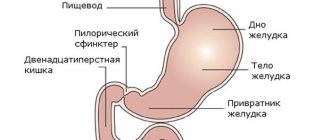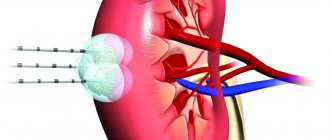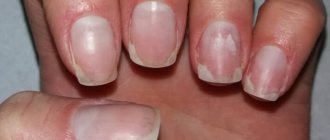Mumps: general concepts
The full name of the disease is epidemiological mumps. Today it is not one hundred percent correct. Despite the increase in the number of cases, mumps has not reached epidemic proportions for a long time.
The causative agent of the disease is a fairly large spherical virus. The causative agent of mumps is extremely unstable to external factors: it is destroyed by sunlight, disinfectant substances, and boiling. It is believed that having been ill once, a person acquires immunity from mumps for life. However, medicine knows cases of repeated illness, and the course of the disease was much more severe.
The disease is viral in nature and is most often observed in children, although sometimes adults can also get it. A characteristic feature of the disease is a tumor behind the ear, descending behind the lower jaw. When looking at a child, associations arise with a pig. This is where the popular names for the disease came from - mumps and behind the ears.
A tumor occurs due to inflammation of the salivary glands. The virus that causes mumps likes to settle in the nervous system and glands. It is transmitted by airborne droplets from person to person. In other organisms (besides humans), the virus does not take root and does not survive. A person’s weakened immunity is all that a harmful microorganism needs for its active life.
Transmission routes
As a rule, the cause of the disease is contact with a patient who becomes infectious a couple of days before the appearance of clear clinical symptoms and in the first 5 days of the disease. Once all symptoms disappear, the patient is not contagious. As we have already said, this virus is transmitted by airborne droplets. But it itself is not volatile and quickly settles. Therefore, very close contact with the patient is needed. The transmission of the virus through contaminated household items and toys cannot be ruled out.
Human susceptibility to this virus is very high. However, boys get sick 1.5 times more often than girls. Mumps is seasonal, and the peak of this disease occurs in the spring, namely in March and April. The lowest probability of illness is in August and September. Most often, outbreaks occur in child care institutions and last up to 100 days. At this time, 4-5 waves are observed.
Classification of the disease
Mumps is an infectious disease divided into three degrees of severity:
- Mild (symptoms are poorly expressed, erased; the course of the disease resembles a mild cold);
- Moderate (signs of the disease are more clearly expressed, the course of the disease resembles a sore throat);
- Severe (symptoms are pronounced and very painful).
If the disease occurs without any symptoms at all, the disease is called inapparent.
There is also non-infectious mumps. This is an inflammation of the salivary glands that occurs as a result of injury or hypothermia.
In addition to the severity, mumps is usually divided according to the clinical picture. There is typical mumps and atypical. In the typical form, all classic symptoms are fully manifested, and natural complications are possible. In general, diagnosing the disease is not difficult. With an atypical course of mumps, it is more difficult to diagnose, since the symptoms are blurred or do not appear at all. In this case, complications and symptoms of concomitant diseases are possible.
Mumps in children: symptoms and treatment
The incubation period lasts from 2 to 3 weeks (minimum 11 days, maximum 23). In the last days of the latent course of the disease, transmission of infection is already possible, so the disease in children's groups often acquires an epidemic character.
The accumulation of viruses in organs and body fluids causes, in addition to the above symptoms, symptoms of mumps also include a general deterioration of the condition:
- Increased body temperature;
- The affected glands increase in size until the 3rd day of the acute disease, from the 4th the process begins to reverse, and by the 8th – 10th day the normal size is restored;
- Weakness, dizziness even without signs of central nervous system damage;
- Headaches and muscle pain.
If complications and secondary infection do not occur, the patient’s condition is satisfactory or moderate. When following medical recommendations during treatment, complications, such as spread to internal organs, are rare.
Symptoms
The most noticeable symptom of the disease is a swelling of the salivary gland, located just below and behind the ear. The tumor may be on one side of the head or on both sides.
In addition to the tumor, mumps manifests itself as follows:
- A sharp rise in temperature to high levels;
- General malaise;
- Appearance of dry mouth;
- Chewing problems;
- Specific head position;
- Possible damage to the sublingual and submandibular glands;
- Wave-like temperature changes;
This condition can last a week or two, after which the gonads may be damaged. Boys may develop orchitis - inflammation of the testicles; girls, less often, may develop oophoritis - inflammation of the ovaries. At this time, the second stage of temperature rise and deterioration in the sick child’s well-being is observed. At this stage, boys may experience pain in the scrotum, swelling and swelling in this area, and, as a rule, only on one side. This period lasts about a week.
At the third stage, the nervous system and brain are involved in the inflammatory process. After a few days, symptoms of meningitis may appear with a high rise in body temperature, repeated vomiting and headaches. In severe cases, confusion, impaired reflexes, and severe fatigue and weakness may occur. In addition, sometimes you can observe the inability of the muscles of the neck and shoulder girdle to function normally. Sometimes non-standard reflexes are possible. For example, when you try to tilt your head, your legs involuntarily bend at the knee joints.
Rarely, patients with mumps may experience spasms of the facial muscles, decreased hearing, memory impairment, and paralysis of the lower extremities.
Complicated mumps
Most often, the virus affects the pancreas. The patient complains of heaviness in the abdomen, nausea and vomiting, and stool disturbances. Abdominal pain is paroxysmal. Amylase and diastase increase in the blood of a sick child, which is typical for acute pancreatitis. All these symptoms are also associated with the fact that the salivary glands do not function properly and the functioning of the digestive system is disrupted.
In school-age boys, especially teenagers, the virus can penetrate the organs of the reproductive system, causing orchitis or prostatitis (inflammation of the testicle or prostate gland). In most cases, one testicle is affected. It swells, becomes painful to the touch, the skin turns red, and the temperature rises. The last symptom is the most dangerous, because if measures are not taken, the consequences can manifest themselves already in adulthood. This is male infertility.
With prostatitis, the perineum becomes painful to the touch. And during a rectal examination of the rectum, a tumor-like formation is detected at the location of the prostate gland by palpation. In girls, the organs of the reproductive system are not affected so often, but cases of oophoritis (inflammation of the ovaries) as a complication of mumps are known.
Damage to the nervous system, which provokes meningitis, can have serious consequences. This is one of the most dangerous complications of mumps. It is characterized by constant headache, elevated body temperature (up to 40°C), and vomiting. The clinical picture is complemented by stiff neck muscles, when the child himself, and sometimes with the help of an adult, cannot reach his own chest with his chin.
To make an accurate diagnosis and begin treatment, a lumbar puncture is required, where cerebrospinal fluid is taken from the spinal cord and tested for the presence of the virus. Meningitis requires immediate treatment, as it poses a huge danger to the child's life.
Meningism has symptoms similar to meningitis, but the above analysis does not detect changes in the cerebrospinal fluid. Both meningitis and meningismus can occur on the 5th day of mumps, and only laboratory tests will help to make a correct diagnosis. Meningism does not require specific treatment, only observation is needed (symptoms subside after 3-4 days), and meningitis is fraught with serious consequences.
Diagnosis of the disease
The diagnosis of “mumps” can be made on the basis of external manifestations, which are very characteristic of this disease. However, in cases of atypical manifestations of the disease (for example, asymptomatic), it is impossible to externally determine the presence of mumps. To make an accurate diagnosis, several procedures and tests are prescribed :
- Taking anamnesis;
- General examination of the child and examination of his complaints about his health;
- Donating blood for serological analysis;
- Examination of saliva and blood for the presence of mumps virus.
Complications of mumps
After suffering from the disease, children develop stable lifelong immunity.
The appearance of complications of the disease is associated with damage to certain organs. These may be: diabetes mellitus, aspermia (lack of sperm) and others. Mumps is a very dangerous disease during pregnancy. In this case, the virus can cause disruption of fetal development with the appearance of congenital malformations and even lead to termination of pregnancy, especially in the early stages of pregnancy.
Treatment of mumps
Children under 2 years of age and those with severe disease are subject to mandatory hospitalization.
For other patients, doctors give the following recommendations:
- Strict adherence to bed rest;
- Compliance with the rules of personal hygiene, in particular the oral cavity (in particular, rinsing with soda solution is recommended);
- Drink plenty of fluids (the patient should be given about 1.5-2 liters of water per day);
- Proper nutrition or a diet prescribed by a doctor.
Drug treatment
Since the disease is often accompanied by an increase in the child’s temperature, the doctor may prescribe a course of antipyretics: Ibuprofen or Paracetamol.
To prevent complications in the brain, drugs are prescribed that help improve cerebral circulation and improve blood flow: Actovegin or Trental. If there is a threat of damage to the gonads, corticosteroids may be prescribed at the very beginning of treatment.
Since there are no drugs against mumps, antiviral therapy is often carried out and a course of antibiotics is prescribed. Among the prescribed drugs may be: Interferon, Isoprinosine, Amoxicellin, Viferon and others.
To reduce pathological reactions to medications or external factors (for example, bright light), antihistamines are prescribed: Suprastin, Diazolin.
In addition to medications, the doctor may prescribe a course of physical therapy: ultraviolet irradiation and UHF therapy.
Disease prevention
The most reliable preventive measure today is vaccination of children. It is first carried out at one year of age. Full immunity lasts for 6 years, so before the child goes to school, he is vaccinated a second time. Vaccinated children get sick very rarely, and the disease is mild and can be treated at home.
Nonspecific preventive measures are carried out among contact children using antiviral drugs - Interferon, Viferon. It is important to identify the carrier of the disease in time and declare quarantine in a child care facility for at least 3 weeks. Sick children can attend kindergarten or school only 2 weeks after the onset of the disease.
Diet for mumps
The basic principles of nutrition for mumps are:
- Drinking frequently and heavily;
- Low-calorie food;
Approximate list of permitted products:
- Boiled lean meat or fish;
- Fresh vegetables (except onions, garlic and radishes) and fruits;
- Honey;
- Porridge on the water;
- Low-fat soups;
- Fermented milk products with zero fat content.
The following products are strictly prohibited:
- Spicy seasonings;
- Legumes;
- Bakery;
- Canned foods;
- Chocolate;
- Onions, radishes, garlic;
- Fried or smoked foods;
- Fatty meats or fish.
During the diet, you should limit the consumption of cheeses, sausages, omelettes, and butter. The same goes for fish caviar and tomato paste.
Mumps is a disease
This disease is called mumps. Characteristic is the penetration of the virus into the body and its introduction into the parenchymal epithelium of the salivary glands with the possibility of further spread to other organs sensitive to the paramyxovirus.
An infected child is contagious for another ten days from the onset of the disease; the most dangerous for others are the first five days.
What is typical: the virus can remain in the baby’s body for up to three weeks, and at the same time not manifest itself in any way. That is, the child may already be infected, but no one will know about it, since there will be no symptoms.
If a baby suffers from an atypical form of mumps, it will be difficult to make a diagnosis right away, because the picture will be blurry. But if a typical form is present, then the following symptoms will be characteristic of an infected child:
- Hyperthermia.
- Enlarged salivary glands.
- Pain or discomfort when chewing, radiating to the ear.
- Specific location of the head in relation to the body. Tilt towards inflammation.
- Additional signs: headache, weakness, dry mouth, chills, trouble sleeping, decreased appetite.
You can read more in the article about the symptoms of mumps in children.
Possible complications and consequences
With adequate treatment, mumps usually occurs without any consequences. But in the case of a complicated disease, a secondary infection may occur. In such cases, mumps can even be fatal.
Complications can arise from any body system:
- Gonads: inflammation of these glands may develop (orchitis in boys and oophoritis in girls). In rare cases, the virus can infect the breast or prostate gland;
- Nervous system: meningitis, meningoencephalitis, polyradiculoneuritis, neuritis.
- Digestive system: pancreatitis;
- Cardiovascular system: myocarditis;
- Musculoskeletal system: arthritis;
- From the kidneys: nephritis.
In rare cases, mumps can cause diabetes.
Each of these conditions can have its own consequences. For example, with orchitis, half of the boys may have impaired spermatogenesis, and a third of those affected may experience infertility in the future.
Causes of the disease
Mumps is an infectious disease. Therefore, the main cause of the development of the disease is the virus that has entered the body.
The causative agent of mumps
The disease is caused by a virus of the Paramyxovirus family. It is unstable in the external environment. In the human body, the virus infects sensitive glandular cells of parenchymal organs.
Most often, a child experiences inflammation of the salivary glands. Pathology may involve the pancreas and gonads. Sometimes the nervous system is damaged.
Contracting a disease
Infection occurs through the air. A sick child releases the virus with a drop of saliva while talking, breathing, sneezing or coughing. The infection enters the mucous membranes of the respiratory tract of a healthy person and causes damage to the glandular epithelial cells. This is where the initial multiplication of the virus occurs.
Then it penetrates the blood and spreads throughout all systems. However, damage occurs only in those organs that are especially sensitive to this disease.
Risk factors
The reasons for the increased incidence are hidden in a number of predisposing factors. They seriously increase the risk of infection. Among them:
- Seasonality of the disease. Pathology is more common in the spring months, when there is a weakening of the immune system after a cold period.
- Refusal of mandatory vaccination.
- Weakening of the immune system. The time of year is not the only factor that can cause this condition. A child’s immunity may be weakened as a result of frequent colds, long-term therapy with antibiotics, and corticosteroids. A similar picture occurs as a result of certain chronic diseases. Sometimes an unbalanced, irregular diet leads to a decrease in immunity.
- Failure to comply with the sanitary (quarantine) regime.
- Childhood. The infection is a childhood disease. Therefore, parents of younger schoolchildren should be as attentive as possible.
Prevention measures
The main preventive measure for mumps is vaccination of children. The first vaccination is given at the age of one year, the second one at 6-7 years. This vaccination schedule provides protection for the child for up to 25 years. It is thanks to vaccination that the number of mumps diseases among children has been reduced.
Vaccination of the population is an active preventive measure. In addition to it, there are passive measures. These include:
- Administration of immunoglobulin in case of contact with a patient with mumps;
- Isolation of the contacted child for 21 days;
- Subsequent vaccination of the person in contact with the patient (two vaccinations with an interval of two months);
- Vaccination of pregnant women in the absence of immunity to mumps;
- Mandatory wet cleaning and ventilation of the room where the sick child is located;
- Disinfection of things, clothes, toys, dishes of the sick person;
- Wearing a respiratory mask or cotton-gauze bandage;
- Compliance with personal hygiene rules;
- Taking measures to strengthen the immunity of all family members.
Mumps has long ceased to be a fatal disease. However, its complications and consequences can be extremely severe, especially for boys. To protect your children from possible infertility or other problems, it is worthwhile to prevent the disease. In particular, vaccinate on time. If your child does get sick, you should definitely consult a doctor to avoid serious complications and unpleasant consequences.
Treatment
If you notice signs of mumps, you should immediately call a doctor. Self-treatment is prohibited as it can have serious consequences. In addition, swelling under the jaw may not always be a sign of mumps.
After examination, the doctor may prescribe treatment at home for mild forms. Then your task is to provide the child with maximum peace. It is best to put it in a separate room. It is necessary to wash the floor with an antibacterial agent 2 times a day. The doctor will tell you what is best to feed the child during this period. Since chewing can cause pain, the therapist may advise feeding the child broths and cereals, but the consumption of fish, meat and fried foods is excluded. You should not eat juice-rich foods (sour, hot, spicy), this can only increase the pain. The child will complain of dry mouth. You can cook compotes; your doctor will tell you which berries are best to make compote from.
Basically, the treatment of mumps in children consists of strict bed rest, lowering the temperature and painkillers for headaches. Constant mouth rinsing with antimicrobial agents is also prescribed. Because the salivary glands stop working as they should, the body becomes susceptible to other infections. If the child feels better after 14 days, the doctor will allow short walks. Mumps itself is not scary; there are more serious reasons to worry about complications of this disease.
Varieties of mumps
Having decided what mumps is, let’s consider the types of the disease. Viral (epidemic) parotitis occurs most often in nature. This is the stage at which the disease affects the reproductive and salivary glands, and the central nervous system. In advanced cases, mumps affects the thyroid and pancreas.
Men and children aged 3 to 6-7 years are susceptible to this type of mumps. The infection flares up seasonally, with major surges occurring in March and April. Mumps in children can be cured easily and quickly, and goes away without visible complications in cases where the disease is diagnosed in time and effective treatment is started.
Purulent or bacterial parotitis occurs extremely rarely in children, since the causative agent is a bacterial infection.
What is mumps
Mumps is an acute infectious viral disease that develops more often in childhood, the characteristic feature of which is inflammation of the salivary glands. The favorite habitat of the virus is the glandular organs and nervous system, that is, in other words, manifestations such as pancreatitis and meningitis are natural processes due to the characteristics of the microorganism.
inflammation of the salivary glands
In nature, the virus circulates only among people, so the source of infection can be a sick person.
The main route of transmission is airborne; in addition to saliva, the virus can be transmitted through contaminated objects through urine. Mumps in newborns occurs through a vertical route of infection or intrauterine infection from a sick mother. But if a woman has had this viral infection before pregnancy, the baby is given antibodies that protect him for six months.
This is one of the most common viral infections that is widespread throughout the world; there is no region or country where there are completely no cases of infection.
Classification of mumps
Mumps belongs to the class of infectious and parasitic diseases. According to the ICD 10 classification, the mumps code is B 26.
According to the course of the disease, the infection is divided into the following degrees:
- light;
- average;
- heavy.
The disease can occur with or without complications. There are known cases of asymptomatic infection, when there are no typical classical clinical manifestations; this form of infection is called inapparent.
In the literature you can find another seemingly illogical term - non-infectious mumps, which has nothing to do with a viral disease. It occurs in case of injury or prolonged hypothermia with subsequent inflammation of the parotid salivary glands of one or two.
How does the mumps virus behave in the human body?
mumps virus
Once on the mucous membrane of the upper respiratory tract and oral cavity, the virus gradually accumulates here, after which it penetrates into the bloodstream. It is carried through the bloodstream to the glandular organs. The parotid salivary glands are the first place of accumulation where mumps settles and begins to actively multiply. Here, as a rule, at the first stage of infection development there is a maximum accumulation of cells.
Part of the microorganism enters other glandular organs and nervous tissue, but their inflammation does not always develop and not immediately. More often, stage-by-stage damage occurs immediately to the salivary glands, then the pancreas, testicles, nervous tissue, and so on. This is due to the multiplication of the virus in the salivary glands and their additional entry into the blood from there.
How does inflammation of the salivary gland occur?
The source of mumps infection is most often contact with an already sick child or adult. Infectious mumps is transmitted during the entire incubation period, which is 9-22 days , depending on the complexity of the disease. At 9-10 days, with mild, timely identified stages, this period ends and the baby can safely come into contact with other children and adults.
Sluggish or latent forms of the disease with invisible or asymptomatic forms of its manifestation pose a serious danger. Mumps disease is transmitted by airborne droplets. This happens through direct contact with a sick person within the same room. The rare occurrence of mumps in recent years is due to the fact that the virus dies outside the human body almost instantly, and coughing, sneezing and runny nose are absent with the disease. In addition, modern domestic medicine has a fairly effective vaccine against mumps.
At what age can mumps occur? Mumps can occur at any age, although it has long been believed that only children with weakened immune systems are affected by the disease. Most often, the disease appears in places of common residence of a large number of people coming from various remote regions. Thus, during the spring and autumn conscription, military hospitals are overcrowded with young people aged 18-19 years old, who came from areas that are poorly susceptible to mass diseases. Infectious diseases such as mumps, measles, and rubella are common in adults and occur in very severe forms. In children, children aged 5 to 12-13 years are especially susceptible to this disease. Oddly enough, newborns in the first year of life are practically not susceptible to mumps.










